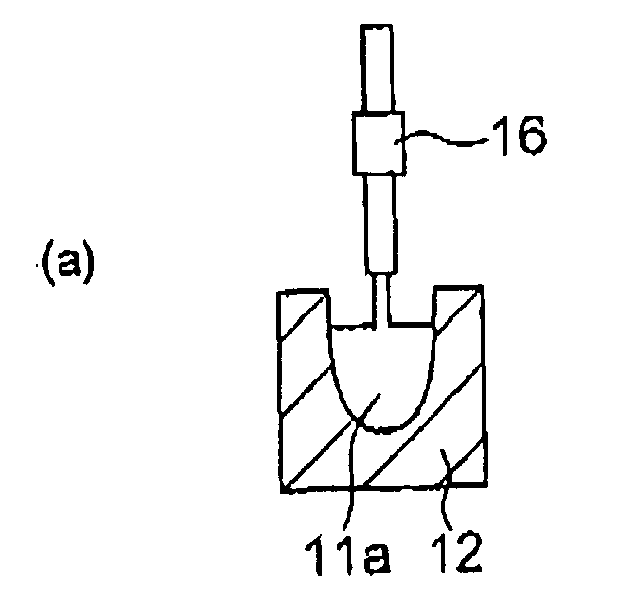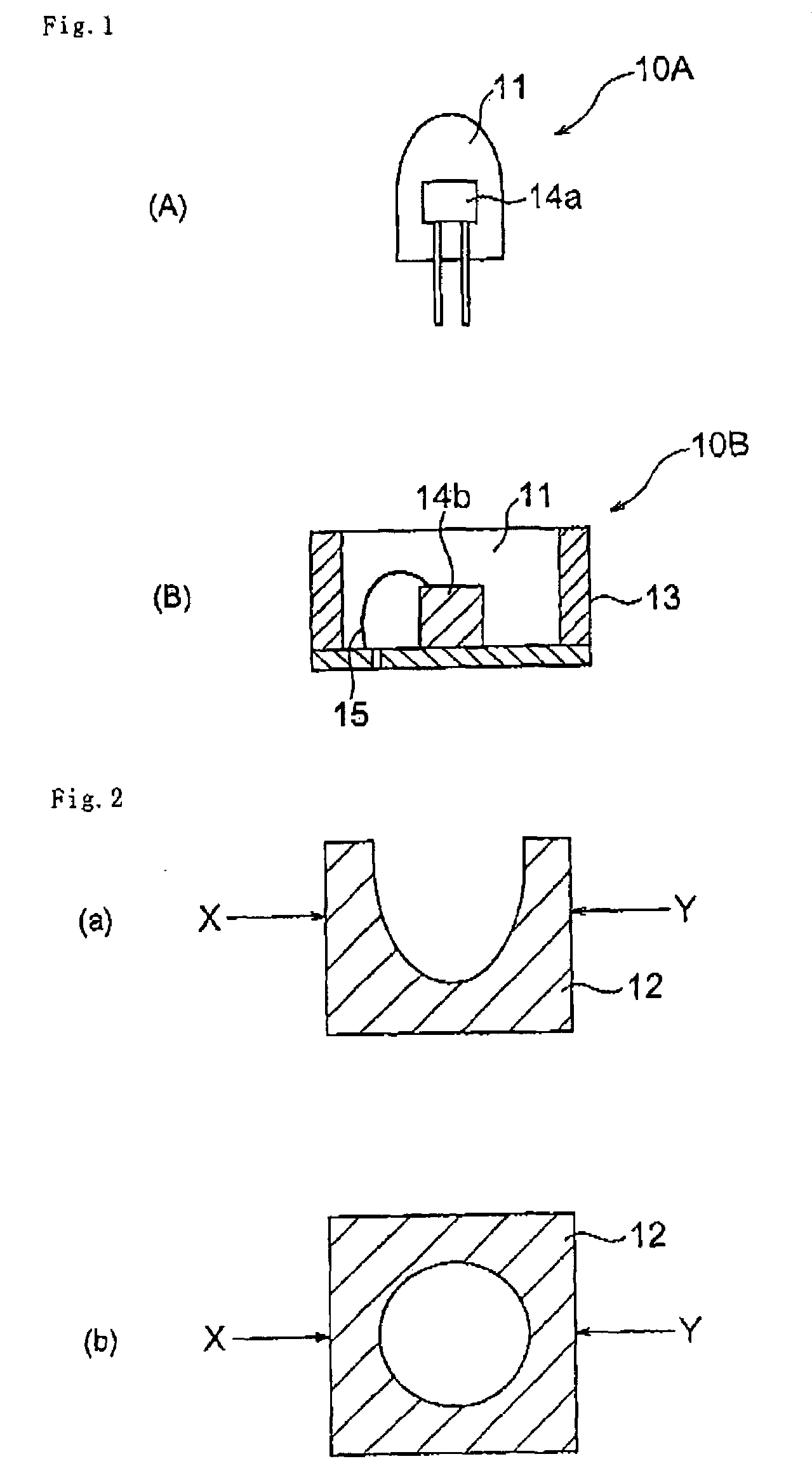Molding material comprising polysilsesquioxane compound, sealing material, and sealed optical element
a technology of polysilsesquioxane and sealing material, which is applied in the direction of thin material processing, electrical equipment, transportation and packaging, etc., can solve the problems of coloration reducing transparency, unusable optical elements, and cracking and yellowing of cured products, and achieve excellent heat resistance and transparency. excellent
- Summary
- Abstract
- Description
- Claims
- Application Information
AI Technical Summary
Benefits of technology
Problems solved by technology
Method used
Image
Examples
example 1
[0100]A 200 ml eggplant-shaped flask equipped with a stirrer was charged with 3.97 g (20 mmol) of phenyltrimethoxysilane (manufactured by Tokyo Kasei Kogyo Co., Ltd.) as a silane compound (2), 4.45 g (20 mmol) of 3-acetoxypropyltrimethoxysilane (manufactured by AZmax Co., Ltd.) as a silane compound (1), 20 ml of toluene as a solvent, and 10 ml of distilled water. Then, 0.10 g (1 mmol) of phosphoric acid (manufactured by Kanto Chemical Co., Inc.) was added as a catalyst while stirring the mixture, followed by stirring at room temperature for 16 hours. After the reaction was complete, a saturated aqueous solution of sodium hydrogencarbonate was added to neutralize the reaction mixture. The mixture was allowed to stand for a short time, toluene and water were removed, and the residue was washed twice with distilled water. The resulting residue was dissolved in 100 ml of 2-butanone and dried with anhydrous magnesium sulfate. After separating the anhydrous magnesium sulfate by filtration...
example 2
[0101]A polysilsesquioxane compound (weight average molecular weight (Mw)=2,500) and a sealing material for optical elements were obtained in the same manner as in Example 1 except for using 0.10 g (1 mmol) of methanesulfonic acid (manufactured by Tokyo Kasei Kogyo Co., Ltd.) instead of phosphoric acid as a catalyst.
example 3
[0102]The same reaction as in Example 1 was carried out except for using 0.10 g (1 mmol) of triethylamine (manufactured by Tokyo Kasei Kogyo Co., Ltd.) instead of phosphoric acid as a catalyst. After adding 50 ml of ethyl acetate and 50 ml of THF, the reaction mixture was neutralized with a 0.1 N hydrochloric acid aqueous solution. After having been allowed to stand for a while, the organic layer was collected and washed twice with distilled water and dried over anhydrous magnesium sulfate. After separating the anhydrous magnesium sulfate by filtration, the filtrate was added dropwise to a large quantity of n-hexane to cause reprecipitation. After removing the n-hexane, the precipitate was dissolved in tetrahydrofuran (THF) to recover the resulting product. After evaporating the THF by an evaporator, the residue was dried under vacuum to obtain a polysilsesquioxane compound (weight average molecular weight (Mw)=6,500). The resulting compound was used as a sealing material for optica...
PUM
| Property | Measurement | Unit |
|---|---|---|
| molar ratio | aaaaa | aaaaa |
| temperature | aaaaa | aaaaa |
| boiling point | aaaaa | aaaaa |
Abstract
Description
Claims
Application Information
 Login to View More
Login to View More - R&D
- Intellectual Property
- Life Sciences
- Materials
- Tech Scout
- Unparalleled Data Quality
- Higher Quality Content
- 60% Fewer Hallucinations
Browse by: Latest US Patents, China's latest patents, Technical Efficacy Thesaurus, Application Domain, Technology Topic, Popular Technical Reports.
© 2025 PatSnap. All rights reserved.Legal|Privacy policy|Modern Slavery Act Transparency Statement|Sitemap|About US| Contact US: help@patsnap.com



